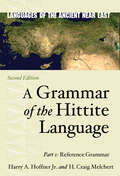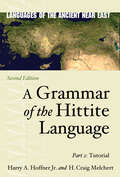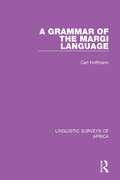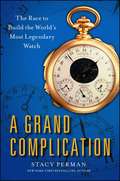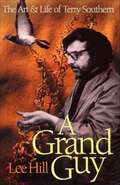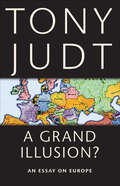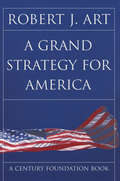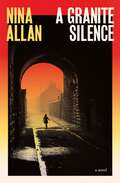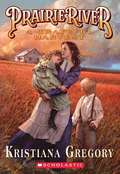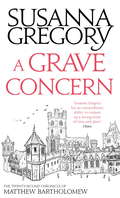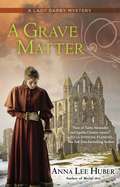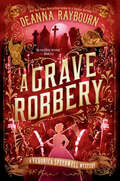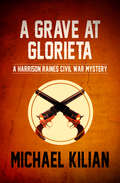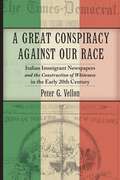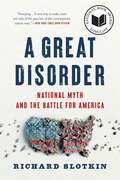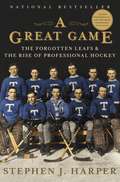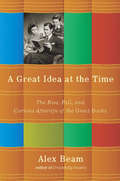- Table View
- List View
A Grammar of the Hittite Language: Part 1: Reference Grammar (Languages of the Ancient Near East)
by Harry A. Hoffner Jr. H. Craig MelchertSince its publication in 2008, A Grammar of the Hittite Language has been the definitive Hittite reference and teaching tool. This new edition brings Hoffner and Melchert’s essential work up to date, incorporating the dramatic progress achieved in the field over the past fifteen years.Heavily revised and expanded, the second edition recasts the discussion of topics to better serve the linguistically informed reader. A reorganized presentation of the synchronic facts makes them accessible to both Hittitologists and linguists interested in Hittite for historical or typological purposes. Part 1 provides a thorough overview of Hittite grammar that is grounded in abundant textual examples. Part 2 is a tutorial that guides students through a series of graded lessons with illustrative sentences for translation. The tutorial is keyed to the reference grammar and includes extensive updated notes. Taken together with Part 2: Tutorial, which guides students through a series of graded lessons keyed to this reference grammar, the work remains the most comprehensive and detailed Hittite grammar ever produced.
A Grammar of the Hittite Language: Part 2: Tutorial (Languages of the Ancient Near East)
by Harry A. Hoffner Jr. H. Craig MelchertThe second volume of Hoffner and Melchert’s Grammar, this tutorial consists of a series of graded lessons with illustrative sentences for the student to translate. The tutorial is keyed to the reference grammar and provides extensive notes. To get maximum use out of the Tutorial, we recommend purchasing the Grammar, which also contains a CD-ROM of both texts with hyperlinks.
A Grammar of the Hittite Language: Part 2: Tutorial (Languages of the Ancient Near East)
by Harry A. Hoffner Jr. H. Craig MelchertDesigned to accompany A Grammar of the Hittite Language, Part 1: Reference Grammar, this tutorial guides language learners through a series of graded lessons with illustrative sentences for translation drawn from actual Hittite texts. The tutorial is keyed to the reference grammar and provides extensive and updated notes, a vocabulary list for each lesson, and a comprehensive glossary.
A Grammar of the Margi Language (Linguistic Surveys of Africa #2)
by Carl HoffmannOriginally published in 1963, this was, and still is, the only Grammar to be published of the Margi language which is spoken by the people of the Adamawa and Bornu areas of Nigeria. Definitions and explanations ahve been given in as explicitya form as possible, especially where the average student could not be expected to be familiar with the terminology. Numerous examples have been added to illustrate the theoretical explanations.
A Grand Army of Black Men
by Edwin S. RedkeyThe Civil War stands vivid in the collective memory of the American public. There has always been a profound interest in the subject, and specifically of Blacks' participation in and reactions to the war and the war's outcome. Almost 200,000 African-American soldiers fought for the Union in the Civil War. Although most were illiterate ex-slaves, several thousand were well educated, free black men from the northern states. The 129 letters in this collection were written by black soldiers in the Union army during the Civil War to black and abolitionist newspapers. They provide a unique expression of the black voice that was meant for a public forum. The letters tell of the men's experiences, their fears, and their hopes. They describe in detail their army days--the excitement of combat and the drudgery of digging trenches. Some letters give vivid descriptions of battle; others protest racism; still others call eloquently for civil rights. Many describe their conviction that they are fighting not only to free the slaves but to earn equal rights as citizens. These letters give an extraordinary picture of the war and also reveal the bright expectations, hopes, and ultimately the demands that black soldiers had for the future--for themselves and for their race. As first-person documents of the Civil War, the letters are strong statements of the American dream of justice and equality, and of the human spirit.
A Grand Complication: The Race to Build the World's Most Legendary Watch
by Stacy PermanTwo wealthy and powerful men engage in a decades-long contest to create and possess the most remarkable watch in history.James Ward Packard of Warren, Ohio, was an entrepreneur and a talented engineer of infinite curiosity, a self-made man who earned millions from his inventions, including the design and manufacture of America&’s first luxury car—the elegant and storied Packard. Henry Graves, Jr., was the very essence of blue-blooded refinement in the early 1900s: son of a Wall Street financier, a central figure in New York high society, and a connoisseur of beautiful things—especially fine watches. Then, as now, expensive watches were the ultimate sign of luxury and wealth, but in the early twentieth century the limitless ambition, wealth, and creativity of these two men pushed the boundaries of mathematics, astronomy, craftsmanship, technology, and physics to create ever more ingenious timepieces. In any watch, features beyond the display of hours, minutes, and seconds are known as &“complications.&” Packard and Graves spurred acclaimed Swiss watchmaker Patek Philippe to create the Mona Lisa of timepieces—a fabled watch that incorporated twenty-four complications and took nearly eight years to design and build. For the period, it was the most complicated watch ever created. For years it disappeared, but then it surfaced at a Sotheby&’s auction in 1999, touching off a heated bidding war, shattering all known records when it fetched $11 million from an anonymous bidder. New York Times bestselling author Stacy Perman takes us from the clubby world of New York high society into the ateliers of the greatest Swiss watchmakers, and into the high-octane, often secretive subculture of modern-day watch collecting. With meticulous research, vivid historical details, and a wealth of dynamic personalities, A Grand Complication is the fascinating story of the thrilling duel between two of the most intriguing men of the early twentieth century. Above all, it is a sweeping chronicle of innovation, the desire for beauty, and the lengths people will go to possess it.
A Grand Guy: The Art & Life of Terry Southern
by Lee Hill"When they're no longer surprised or astonished or engaged by what you say, the ball game is over. If they find it repulsive, or outlandish, or disgusting, that's all right, or if they love it, that's all right, but if they just shrug it off, it's time to retire."-- Terry SouthernA Grand GuyHe was the hipster's hipster, the perfect icon of cool. A small-town Texan who disdained his "good ol' boy" roots, he bopped with the Beats, hobnobbed with Sartre and Camus, and called William Faulkner friend. He was considered one of the most creative and original players in the Paris Review Quality Lit Game, yet his greatest literary success was a semi pornographic pulp novel. For decades, the crowd he ran with was composed of the most famous creative artists of the day. He wrote Dr. Strangelove with Stanley Kubrick, Easy Rider with Peter Fonda and Dennis Hopper, and worked on Saturday Night Live with a younger, louder breed of sacred cow torpedoers. He's a face in the crowd on the cover of Sgt. Pepper's Lonely Hearts Club Band (the guy in the sunglasses). Wherever the cultural action was, he was there, the life of every party -- Paris in the '50s, London in the swinging '60s, Greenwich Village, and Big Bad Hollywood. Brilliant, dynamic, irrepressible, he enjoyed remarkable success and then squandered it with almost superhuman excess. There was, and ever will be, only one Terry Southern.In a biography as vibrant and colorful as the life it celebrates, Lee Hill masterfully explores the high and low times of the unique, incomparable Terry Southern, one of the most genuine talents of this or any other age. Illuminating, exhilarating, and sobering, it is an intimate portrait of an unequaled satirist and satyrist whose appetite for life was enormous -- and whose aim was sure and true as he took shots at consumerism, America's repressive political culture, upper-class amorality, and middle-class banality. But more than simply the story of one man, here is a wide-screen, Technicolor view of a century in the throes of profound cultural change -- frorn the first chilly blasts of the Cold War and McCarthyism to the Vietnam era and the Reagan years; from Miles and Kerouac to the Beatles, the Stones, and beyond. And always at the center of the whirlwind was Terry Southern -- outrageous, unpredictable, charming, erudite, and eternally cool; a brazen innovator and unappreciated genius; and most of all, A Grand Guy.
A Grand Illusion?: An Essay on Europe
by Tony Judt&“Tony Judt&’s elegant essay is a good place to begin discussion of these two large postwar questions: What is Europe? And where is it going?&” —Michael Mandelbaum, Johns Hopkins University &“I am enthusiastically European; no informed person could seriously wish to return to the embattled, mutually antagonistic circle of suspicious and introverted nations that was the European continent in the quite recent past. But it is one thing to think an outcome desirable, quite another to suppose it is possible. It is my contention that a truly united Europe is sufficiently unlikely for it to be unwise and self-defeating to insist upon it. I am thus, I suppose, a Euro-pessimist.&” —Tony Judt First published in 1996, A Grand Illusion? was a prescient, skeptical and passionately argued reflection on the state of Europe. In it, Tony Judt addressed the questions facing the Continent as the new millennium neared: What are the real prospects for an enlarged European Union and how large is too large? Which nations should &“belong&” to Europe, when, and by what criteria? What defines &“Europe&” and how should we think about its future? If the myth of &“Europe&” is too abstract to attract deep popular loyalty and may even prevent us from finding solutions to concrete problems, he argued, we have everything to gain from examining it critically. This masterly analysis forms a focus for debate and documents that has ongoing relevance today. &“One of the most prescient texts on the European Union . . . [Tony Judt] maps out everything we are witnessing today from the slow erosion of the welfare state to the return of nationalisms.&” —Rachel Donadio, contributing writer for The Atlantic
A Grand Strategy for America (Cornell Studies in Security Affairs)
by Robert J. ArtThe United States today is the most powerful nation in the world, perhaps even stronger than Rome was during its heyday. It is likely to remain the world's preeminent power for at least several decades to come. What behavior is appropriate for such a powerful state? To answer this question, Robert J. Art concentrates on "grand strategy"-the deployment of military power in both peace and war to support foreign policy goals. He first defines America's contemporary national interests and the specific threats they face, then identifies seven grand strategies that the United States might contemplate, examining each in relation to America's interests. The seven are: -dominion-forcibly trying to remake the world in America's own image; - global collective security-attempting to keep the peace everywhere; -regional collective security-confining peacekeeping efforts to Europe; - cooperative security-seeking to reduce the occurrence of war by limiting other states' offensive capabilities; - isolationism-withdrawing from all military involvement beyond U. S. borders; -containment-holding the line against aggressor states; and -selective engagement-choosing to prevent or to become involved only in those conflicts that pose a threat to the country's long-term interests. Art makes a strong case for selective engagement as the most desirable strategy for contemporary America. It is the one that seeks to forestall dangers, not simply react to them; that is politically viable, at home and abroad; and that protects all U. S. interests, both essential and desirable. Art concludes that "selective engagement is not a strategy for all times, but it is the best grand strategy for these times. "
A Granite Silence: a mesmerising historical novel about a notorious true crime case
by Nina AllanA Granite Silence is an exploration - a journey through time to a particular house, in a particular street, Urquhart Road, Aberdeen in 1934, where eight-year-old Helen Priestly lives with her mother and father. Among this long, grey corridor of four-storey tenements, a daunting expanse of granite, working families are squashed together like pickled herrings in their narrow flats. Here are Helen's neighbours: the Topps, the Josses, the Mitchells, the Gordons, the Donalds, the Coulls and the Hunts.Returning home from school for her midday meal, Helen is sent by her mother Agnes to buy a loaf from the bakery at the end of the street. Agnes never sees her daughter alive again. Nina Allan explores the aftermath of Helen's disappearance, turning a probing eye to the close-knit neighbourhood - where everyone knows everyone, at least by sight - and with subtlety and sympathy, explores the intricate layers of truth and falsehood that can coexist in one moment of history.Full of echoes, allusions and eerie diversions, A Granite Silence is an investigation into a notorious true crime case, but also a stylish, imaginative inquiry into who gets to tell a story, how it is told, and why.
A Granite Silence: a mesmerising historical novel about a notorious true crime case
by Nina AllanA Granite Silence is an exploration - a journey through time to a particular house, in a particular street, Urquhart Road, Aberdeen in 1934, where eight-year-old Helen Priestly lives with her mother and father. Among this long, grey corridor of four-storey tenements, a daunting expanse of granite, working families are squashed together like pickled herrings in their narrow flats. Here are Helen's neighbours: the Topps, the Josses, the Mitchells, the Gordons, the Donalds, the Coulls and the Hunts.Returning home from school for her midday meal, Helen is sent by her mother Agnes to buy a loaf from the bakery at the end of the street. Agnes never sees her daughter alive again. Nina Allan explores the aftermath of Helen's disappearance, turning a probing eye to the close-knit neighbourhood - where everyone knows everyone, at least by sight - and with subtlety and sympathy, explores the intricate layers of truth and falsehood that can coexist in one moment of history.Full of echoes, allusions and eerie diversions, A Granite Silence is an investigation into a notorious true crime case, but also a stylish, imaginative inquiry into who gets to tell a story, how it is told, and why.
A Graphic History of Sport: An Illustrated Chronicle of the Greatest Wins, Misses, and Matchups from the Games We Love
by Andrew JanikEvery sport has its legends . . . THE RUMBLE IN THE JUNGLE THE BATTLE OF THE SEXES THE PINE TAR INCIDENT THE STEEL CURTAIN PHI SLAMA JAMA A Graphic History of Sport presents artist Andrew Janik’s survey of the weird and wonderful world of athletic competition. The unforgettable plays and over-the-top personalities, the heated rivalries and storied dynasties— all come to vivid life in a series of illustrations filled with subtle wit and a modern design aesthetic. Each illustration is paired with a detailed historic overview as well as surprising stats and trivia, capturing a true sports fan’s delight in the games we love to love and the players we love to hate.
A Grateful Harvest
by Kristiana GregoryIt hasn't been easy for Nessa to find her place in Prairie River. She is having difficulty making friends, and her position as the local teacher is on shaky ground. Many townspeople still question whether she, a runaway orphan, can be trusted.
A Grave Concern: The Twenty Second Chronicle of Matthew Bartholomew
by Susanna GregoryIdentifying the murderer of the Chancellor of the University is not the only challenge facing physician Matthew Bartholomew. Many of his patients have been made worse by the ministrations of a 'surgeon' recently arrived from Nottingham, his sister is being rooked by the mason she has commissioned to build her husband's tomb, and his friend, Brother Michael, has been offered a Bishopric which will cause him to leave Cambridge.Brother Michael, keen to leave the University in good order, is determined that the new Chancellor will be a man of his choosing. The number of contenders putting themselves forward for election threatens to get out of control, then more deaths in mysterious circumstances make it appear that someone is taking extreme measures to manipulate the competition.With passions running high and a bold killer at large, both Bartholomew and Brother Michael fear the very future of the University is at stake.
A Grave Concern: The Twenty Second Chronicle of Matthew Bartholomew (Chronicles of Matthew Bartholomew #22)
by Susanna GregoryFor the twentieth anniversary of the start of the Matthew Bartholomew series, Sphere is delighted to reissue all of the medieval monk's cases with beautiful new series-style covers.------------------------------------The twenty second chronicle of Matthew Bartholomew. Identifying the murderer of the Chancellor of the University is not the only challenge facing physician Matthew Bartholomew. Many of his patients have been made worse by the ministrations of a 'surgeon' recently arrived from Nottingham, his sister is being rooked by the mason she has commissioned to build her husband's tomb, and his friend, Brother Michael, has been offered a Bishopric which will cause him to leave Cambridge.Brother Michael, keen to leave the University in good order, is determined that the new Chancellor will be a man of his choosing. The number of contenders putting themselves forward for election threatens to get out of control, then more deaths in mysterious circumstances make it appear that someone is taking extreme measures to manipulate the competition.With passions running high and a bold killer at large, both Bartholomew and Brother Michael fear the very future of the University is at stake.'A first-rate treat for mystery lovers' (Historical Novels Review)'Susanna Gregory has an extraordinary ability to conjure up a strong sense of time and place' (Choice)
A Grave Concern: The Twenty Second Chronicle of Matthew Bartholomew (Chronicles of Matthew Bartholomew #22)
by Susanna GregoryIdentifying the murderer of the Chancellor of the University is not the only challenge facing physician Matthew Bartholomew. Many of his patients have been made worse by the ministrations of a 'surgeon' recently arrived from Nottingham, his sister is being rooked by the mason she has commissioned to build her husband's tomb, and his friend, Brother Michael, has been offered a Bishopric which will cause him to leave Cambridge.Brother Michael, keen to leave the University in good order, is determined that the new Chancellor will be a man of his choosing. The number of contenders putting themselves forward for election threatens to get out of control, then more deaths in mysterious circumstances make it appear that someone is taking extreme measures to manipulate the competition.With passions running high and a bold killer at large, both Bartholomew and Brother Michael fear the very future of the University is at stake.
A Grave Inheritance
by Kari EdgrenBook two of Goddess BornSelah Kilbrid may descend from the goddess Brigid, but her heart beats-and breaks-the same as any human. Yet enduring the scorn of Londonâ TMs most noble lords and ladies is a small price to pay for a chance at true happiness. Selah would endure much more for love, and her betrothed, Lord Henry Fitzalan, is prepared to challenge anyone foolish enough to stand in their wayâ "even another goddess born.But when a captivating young gentleman draws Selah into a world shadowed by secrets, she is forced to confront her darkest fears. What if some differences are too great to overcome and a future with Henry is doomed from the start?With these doubts threatening her impending marriage, a violent attack on an innocent child pushes Selah to the very edge of her power. She must find a way to cross into the Otherworld and regain her strengthâ "or forfeit the streets of London to death and disease.100,000 words
A Grave Matter (A Lady Darby Mystery #3)
by Anna Lee HuberScotland, 1830. Following the death of her dear friend, Lady Kiera Darby is in need of a safe haven. Returning to her childhood home, Kiera hopes her beloved brother Trevor and the merriment of the Hogmanay Ball will distract her. But when a caretaker is murdered and a grave is disturbed at nearby Dryburgh Abbey, Kiera is once more thrust into the cold grasp of death. While Kiera knows that aiding in another inquiry will only further tarnish her reputation, her knowledge of anatomy could make the difference in solving the case. But agreeing to investigate means Kiera must deal with the complicated emotions aroused in her by inquiry agent Sebastian Gage. When Gage arrives, he reveals that the incident at the Abbey was not the first--some fiend is digging up old bones and holding them for ransom. Now Kiera and Gage must catch the grave robber and put the case to rest...before another victim winds up six feet under.
A Grave Robbery (A Veronica Speedwell Mystery #9)
by Deanna RaybournVeronica and Stoker discover that not all fairy tales have happy endings, and some end in murder, in this latest historical mystery from New York Times bestselling and Edgar Award–nominated author Deanna Raybourn.Lord Rosemorran has purchased a wax figure of a beautiful reclining woman and asks Stoker to incorporate a clockwork mechanism to give the Rosemorran Collection its own Sleeping Beauty in the style of Madame Tussaud&’s. But when Stoker goes to cut the mannequin open to insert the mechanism, he makes a gruesome discovery: this is no wax figure. The mannequin is the beautifully preserved body of a young woman who was once very much alive. But who would do such a dreadful thing, and why? Sleuthing out the answer to this question sets Veronica and Stoker on their wildest adventure yet. From the underground laboratories of scientists experimenting with electricity to resurrect the dead in the vein of Frankenstein to the traveling show where Stoker once toured as an attraction, the gaslit atmosphere of London in October is the perfect setting for this investigation into the unknown. Through it all, the intrepid pair is always one step behind the latest villain—a man who has killed once and will stop at nothing to recover the body of the woman he loved. Will they unmask him in time to save his next victim? Or will they become the latest figures to be immortalized in his collection of horrors?
A Grave at Glorieta (The Harrison Raines Civil War Mysteries #4)
by Michael KilianHarrison Raines struggles to keep the Civil War from overtaking the West It's 1862 and the Civil War hangs in the balance. Although the Union has beaten back the Southern armies in the East, the Confederacy is intent on opening new fronts to the west--and perhaps securing British support to widen this ugly conflict into a world war. To contain the rebellion, Abraham Lincoln's secret service sends exiled Virginian Harrison Raines to Texas to gather intelligence about a planned Confederate invasion of New Mexico. Raines has never been west of the Mississippi, and he will find Texan hospitality rather rougher than he expected. When the hero of the Battle of Glorieta Pass is killed, Raines's only friend in Texas is accused of the crime. To save his friend's neck, Raines must find the real killer--or risk never making it back to Virginia alive. A Grave at Glorieta is the 4th book in the Harrison Raines Civil War Mysteries, but you may enjoy reading the series in any order.
A Great Big Girl Like Me: The Films of Marie Dressler
by Victoria SturtevantIn the first book-length study of Marie Dressler, MGM's most profitable movie star in the early 1930s, Victoria Sturtevant analyzes Dressler's use of her body to challenge Hollywood's standards for leading ladies. At five feet seven inches tall and two hundred pounds, Dressler often played ugly ducklings, old maids, doting mothers, and imperious dowagers. However, her body, her fearless physicality, and her athletic slapstick routines commanded the screen. Sturtevant interprets the meanings of Dressler's body by looking at her vaudeville career, her transgressive representation of an "unruly" yet sexual body in Emma and Christopher Bean, ideas of the body politic in the films Politics and Prosperity, and Dressler as a mythic body in Min and Bill and Tugboat Annie.
A Great Conspiracy against Our Race: Italian Immigrant Newspapers and the Construction of Whiteness in the Early 20th Century (Culture, Labor, History #5)
by Peter G. VellonIn A Great Conspiracy against Our Race, Peter Vellon explores how Italian immigrants, a once undesirable and “swarthy” race, assimilated into dominant white culture through the influential national and radical Italian language press in New York City. Racial history has always been the thorn in America’s side, with a swath of injustices—slavery, lynching, segregation, and many other ills—perpetrated against black people. This very history is complicated by, and also dependent on, what constitutes a white person in this country. Many of the European immigrant groups now considered white also had to struggle with their own racial identities. Examining the press as a cultural production of the Italian immigrant community, this book investigates how this immigrant press constructed race, class, and identity from 1886 through 1920. Their frequent coverage of racially charged events of the time, as well as other topics such as capitalism and religion, reveals how these papers constructed a racial identity as Italian, American, and white. A Great Conspiracy against Our Race vividly illustrates how the immigrant press was a site where socially constructed categories of race, color, civilization, and identity were reworked, created, contested, and negotiated. Vellon also uncovers how Italian immigrants filtered societal pressures and redefined the parameters of whiteness, constructing their own identity. This work is an important contribution to not only Italian American history, but America’s history of immigration and race.
A Great Disorder: National Myth and the Battle for America
by Richard SlotkinAs culture wars pit us against each other, A Great Disorder looks to the myths that have shaped American identity and reveals how they have brought us to the brink of an existential crisis.Red America and Blue America are so divided they could be two different countries, with wildly diverging views of why government exists and who counts as American. Their ideologies are grounded in different versions of American history, endorsing irreconcilable visions of patriotism and national identity.A Great Disorder is a bold, urgent work that helps us make sense of today’s culture wars through a brilliant reconsideration of America’s foundational myths and their use in contemporary politics. Famous for his trilogy on the Myth of the Frontier, Richard Slotkin identifies five myths, born of different eras, that have shaped our conception of what it means to be American: the myths of the Frontier, the Founding, the Civil War (which he breaks into two opposing camps, Emancipation and the Lost Cause), and the Good War, embodied by the multiethnic platoon fighting for freedom. His argument is that while Trump and his MAGA followers have played up a frontier-inspired hostility to the federal government and rallied around Confederate symbols to champion a racially exclusive definition of American nationality, Blue America, taking its cue from the protest movements of the 1960s, envisions a limitlessly pluralistic country in which the federal government is the ultimate enforcer of rights and opportunities. American history—and the foundations of our democracy—have become a battleground. It is not clear at this time which vision will prevail.
A Great Game: The Forgotten Leafs & the Rise of Professional Hockey
by Stephen J. HarperDrawing on extensive archival records and illustrations, histories of the sport, and newspaper files, Canada’s Prime Minister delves into the fascinating early years of ice hockey.In the tumultuous beginnings of hockey, the fights were as much off the ice as on it. This engaging new book is about the hockey heroes and hard-boiled businessmen who built the game, and the rise and fall of legendary teams pursuing the Stanley Cup. With a historian’s perspective and fan’s passion, Stephen Harper presents a riveting and often-surprising portrait, capturing everything from the physical contests on the rinks to the battles behind the scenes.Stephen Harper shows that many things have stayed the same. Rough play, fervent hometown loyalties, owner-player contract disputes, dubious news coverage, and big money were issues from the get-go. Most important in these early years was the question: Was hockey to be a game of obsessed amateurs playing for the love of the sport, or was it a game for paid professionals who would give fans what they wanted? Who should be responsible for the sport—including its bouts of violence—both on and off the ice.A century ago, rinks could melt, and by halftime the blades screwed to the players’ shoes could be sinking in mud. It was during this time that the unsuccessful Toronto Professionals of 1908 and the victorious Toronto Blue Shirts of 1914 battled for the city’s very first Stanley Cup. Against the fanatical opposition of amateur hockey leaders, these “forgotten Leafs” would lay the groundwork for the world’s most profitable hockey franchise.In paying tribute to these hockey pioneers and the contagious loyalty of their fans, Harper resurrects the history of hockey’s first decades. Lavishly illustrated with photographs of the game’s greatest arenas and earliest star players, this entertaining and original book will captivate you from start to finish.
A Great Idea at the Time: The Rise, Fall, and Curious Afterlife of the Great Books
by Alex BeamToday the classics of the western canon, written by the proverbial "dead white men,” are cannon fodder in the culture wars. But in the 1950s and 1960s, they were a pop culture phenomenon. The Great Books of Western Civilization, fifty-four volumes chosen by intellectuals at the University of Chicago, began as an educational movement, and evolved into a successful marketing idea. Why did a million American households buy books by Hippocrates and Nicomachus from door-to-door salesmen? And how and why did the great books fall out of fashion? In A Great Idea at the Time Alex Beam explores the Great Books mania, in an entertaining and strangely poignant portrait of American popular culture on the threshold of the television age. Populated with memorable characters, A Great Idea at the Time will leave readers asking themselves: Have I read Lucretius’s De Rerum Natura lately? If not, why not?
